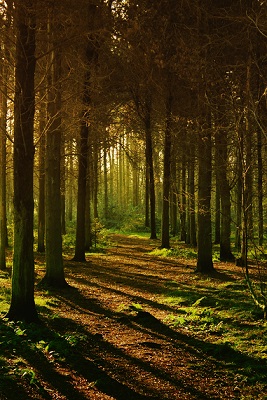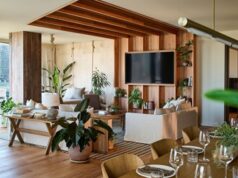 NATIONAL REPORT—Did you know that by shifting to green design and sustainable practices you could increase the property value of your guest houses by 7 percent and reduce operational costs by 8 percent per guest house? This is according to the World Green Building Trends 2018 SmartMarket Report. Sustainability, which first started in industrial, residential, and commercial buildings has now swept over the hospitality industry. More and more spas and resorts are going green and with good reason—talk of higher profits, increased property value, and enhanced marketability not to mention significant contributions to creating a clean, nontoxic environment. If you run an accommodation business, especially in a woodland area which is the new equivalent of waterfront properties, it is high time you jumped on this bandwagon. Although often looked at as costly, building and running sustainable guest houses is affordable and here are a few tips to get you started.
NATIONAL REPORT—Did you know that by shifting to green design and sustainable practices you could increase the property value of your guest houses by 7 percent and reduce operational costs by 8 percent per guest house? This is according to the World Green Building Trends 2018 SmartMarket Report. Sustainability, which first started in industrial, residential, and commercial buildings has now swept over the hospitality industry. More and more spas and resorts are going green and with good reason—talk of higher profits, increased property value, and enhanced marketability not to mention significant contributions to creating a clean, nontoxic environment. If you run an accommodation business, especially in a woodland area which is the new equivalent of waterfront properties, it is high time you jumped on this bandwagon. Although often looked at as costly, building and running sustainable guest houses is affordable and here are a few tips to get you started.
Switch Traditional Building Materials for Wood
Sustainability is all about energy efficiency, reducing waste, eliminating the production of toxic gases and conserving nonrenewable natural resources. Log cabins do all these. In fact, they are considered the most environmentally friendly homes by Triple Pundit. Why? For starters, they are made from wood which comes from trees; renewable resources. Secondly, delivering log cabins can be done using at most two trailers unlike say brick or stone homes which would require you to hire a dozen contractors to deliver the materials to be used. Fewer automobiles mean less fuel consumption, minimized release of combustion gases and reduced costs. Thirdly, log cabin walls serve both a structural and functional purpose. Wood absorbs heat during the day and radiates it at night eliminating the need for air conditioners thus minimizing energy expenditures in your guesthouses. These are just but a few reasons why log structures built from cabin kits qualify as green buildings. Costs asides, cabin guesthouses are a brilliant way to incorporate a warm, soft earthy feel that is in theme with the woodland itself.
Limit Water & Energy Wastage
Simple changes in how water and electricity are used could add extra zeros to your bank account on top of enhancing guest experiences. These include switching to smart devices. Smart bulbs, for example, can detect whether a room is occupied or not and consequently switch on or off. Smart key card switches work in the same way and they switch off lights and electronics and close window treatments once a guest disengages the switch and leaves the room. Smart laundry, air-conditioning, and kitchen equipment might be costly at first, but they will give you returns on your investment by greatly minimizing energy costs. You can install an on-site renewable energy source in your guest house, say solar panels to heat water for your guests. Skylights are another brilliant way of reducing energy wastage. When it comes to water conservation minor changes like installing dual flush toilets with 1.28 GPF come in handy. Switch ordinary sink aerators to 2.2 gpm for dishwashing and between 0.25 to 0.5 gpm for bathroom faucets. Low flow shower heads of between 0.5 to 2 gpm also come highly recommended. Putting in place a linen reuse program will help cut on water use and save you plenty.
Ditch the Disposables
Guest houses often commit to providing tiny toiletries from soaps to shampoos and lotions. Beverages like coffee also come in sachets. Cups and plates in hotel rooms are in most cases disposable. The packaging of the above-mentioned items and the disposable plastic cups and plates are usually nonbiodegradable and end up polluting the environment or in landfills somewhere. In a bid to be eco-friendlier, swap plastic disposables with reusable mugs and glasses. Additionally, go for organic and refillable soaps and shampoos among other toiletries. Alternatively, you can invest in toiletries in biodegradable packaging.
Serving organic food, having your staff use organic cleaners, composting, and recycling are other things you can do to make your guest house eco-friendly. Woodland areas usually have a serene, calm, noise-free environment that is not only aesthetically pleasing but has clean air and gives off good vibes. Your guest house should embody this and one sure way to do so is shifting to sustainable practices and investing in green design.







